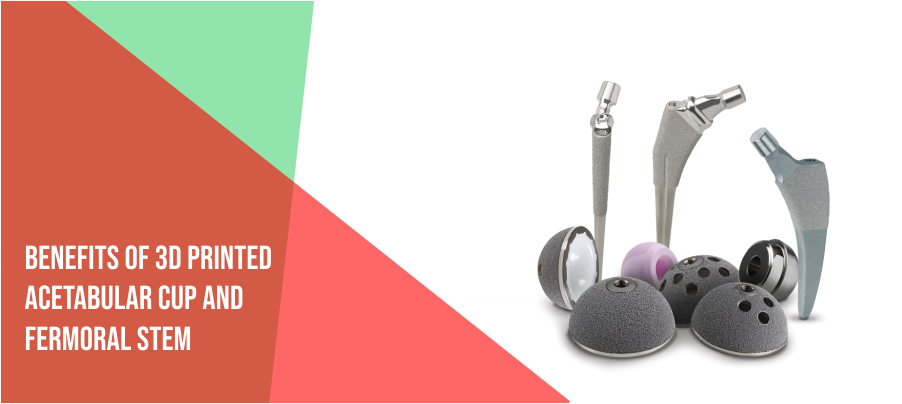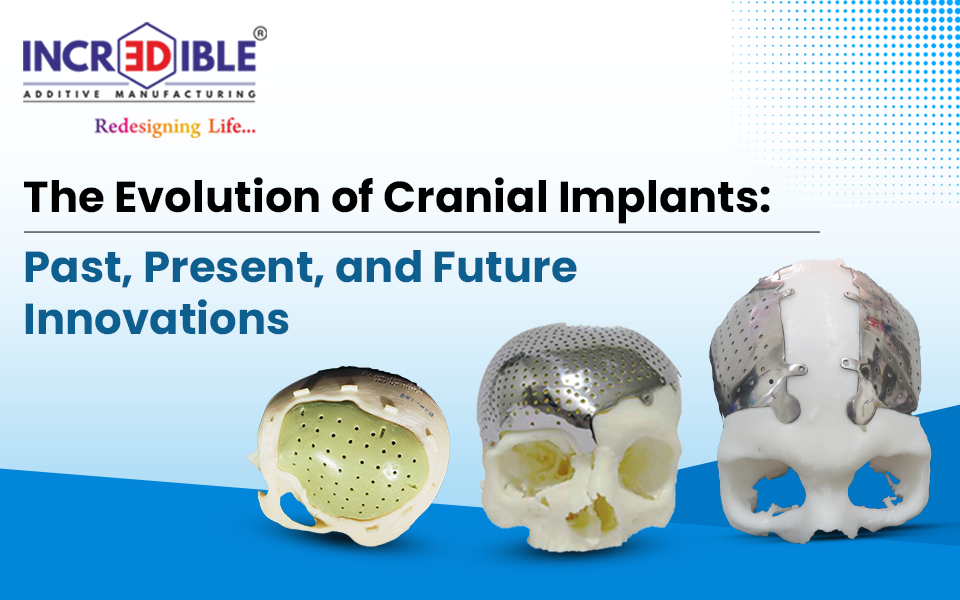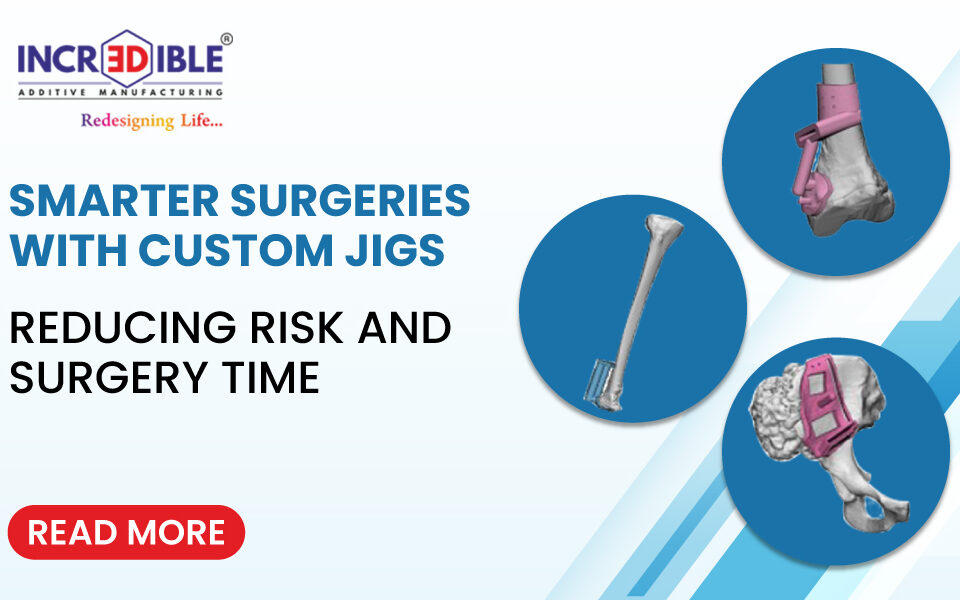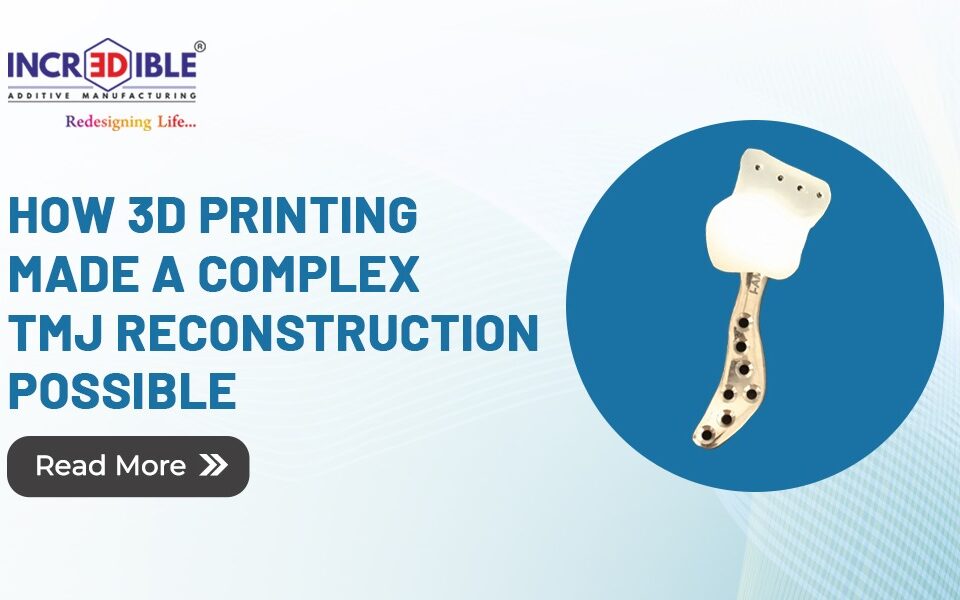Replacement of acetabulum with acetabular cup and femoral head with femoral stem or more commonly known as complete Hip Replacement is common in adults above the age of 45. According to the Agency for Healthcare Research and Quality, more than 300,000 total hip replacements are performed each year in the United States alone. Three-dimensional printing is increasingly applied in orthopedics. Surgery around the bony pelvis is challenging due to the complex anatomy, deep exposures and narrow safe spaces required to avoid critical neurovascular and visceral structures. The bony pelvis usually has high contrast compared to surrounding soft tissue on CT scans and is easily ‘segmented’ into 3D models for virtual surgical planning using computer-assisted design (CAD) and computer-assisted manufacturing (CAM) techniques.
3D printed orthopedic implants have recently revolutionized the treatment of massive pelvic bone defects and we are at the cusp of a change from conventional non-personalized implant to 3D printed unique implants.
If you look at manufacturing, 3D printing enables complex porous structures with specifically designed shapes to be produced, unlike conventional technologies, where the control over the final architecture of the porous backside coating is limited. The use of conventional implants has resulted in acetabular defects in many cases. Conventional implants fail because of the poor fixation to the bone due to the complex shape of the defect and low surface area of host bone with good blood supply. With 3D printed Acetabular Cup and Femoral Stem using various lattice structures eliminated this huge problem in the system and has a high success rate.
Current hip replacement femoral implants are made of completely solid materials which are stiffer than the nature of organic bone. This mechanical mismatch can cause significant bone loss, which can lead to serious complications such as peri-prosthetic fracture during or after revision surgery. With the right materials, 3D printed femoral implants can mimic the properties of bone tissue. Fully porous implant with an optimized material micro-structure can reduce the amount of bone loss secondary to stress shielding by 75% compared to a fully solid implant.
For tumor cases and for revision hip cases, use of 3D metal printed implants and additive manufacturing plays very useful and vital role which ensures high success rate by giving personalized line of treatment.
The field of medicine has zero room for error, the slightest mistake could be fatal. 3D printing allows medical professionals to navigate a better course of action with minimum invasive maneuvers. Additionally, 3D-printed unique anatomical models aid surgeons during consultations with their patients and their families, when explaining their condition. Thus it makes the procedure simpler for doctors as well as patients.




